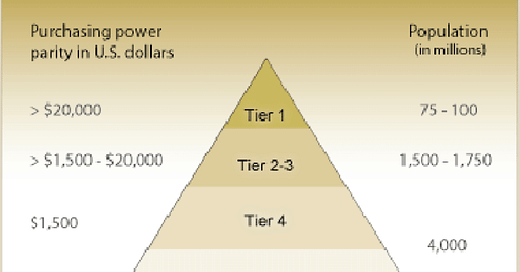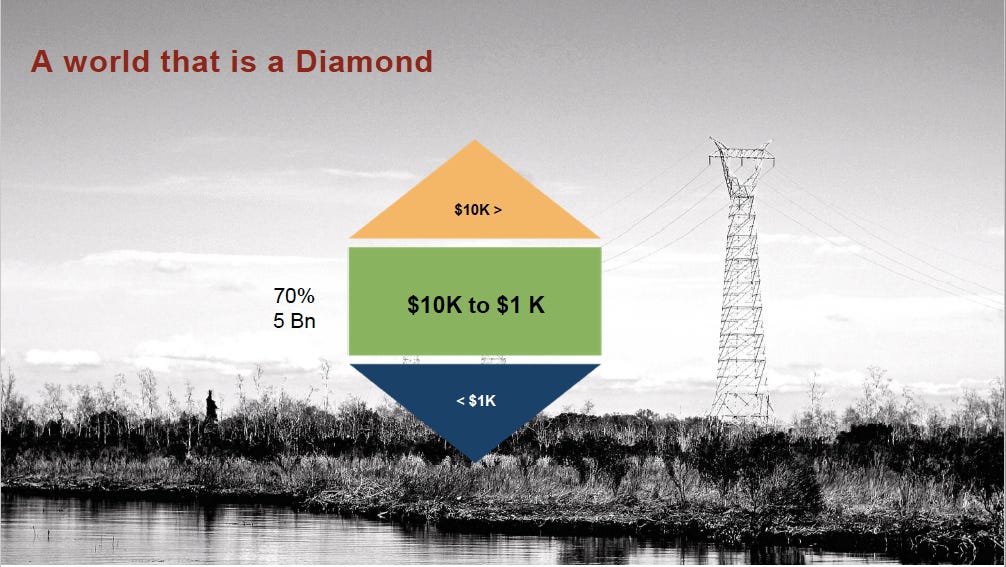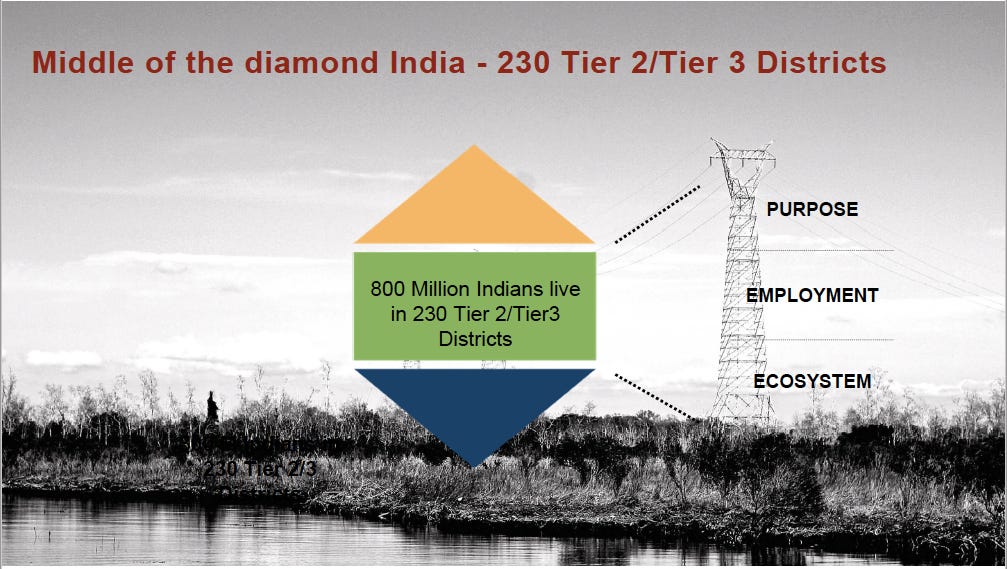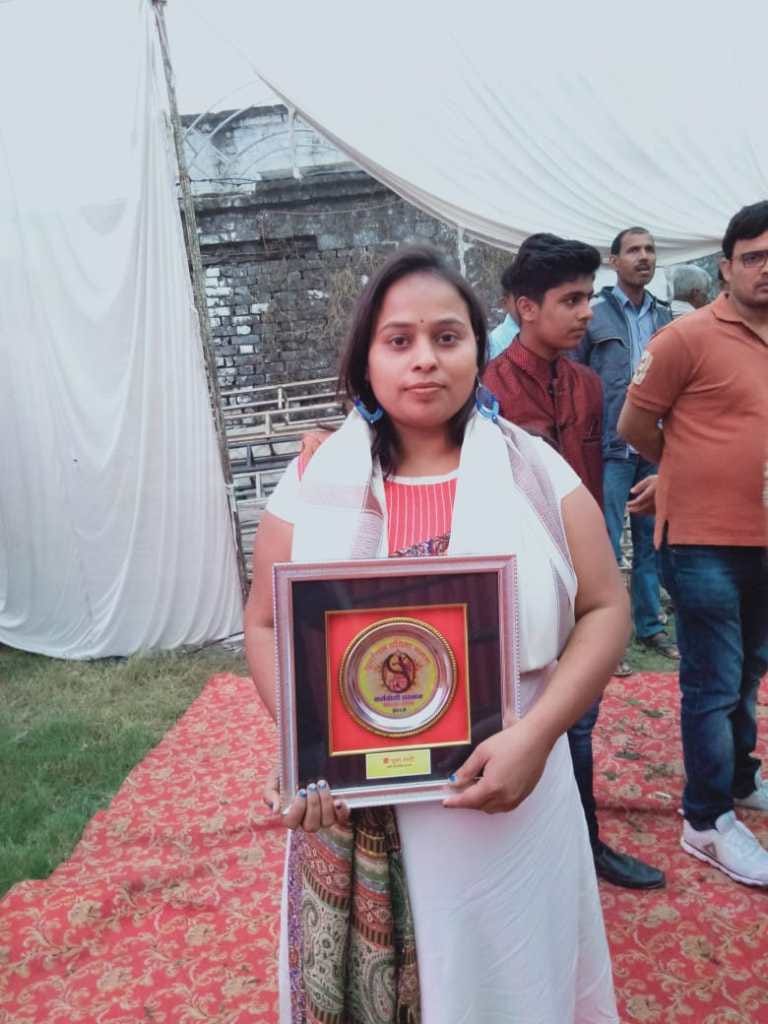Eradicating Poverty
If you read C.K.Prahlad’s monumental book ‘Fortune at the bottom of the pyramid’ you’d find almost 5 billion people are in the bottom most part of the pyramid with Purchasing Power Parity of less than $1500 per year.Now if you see the numbers almost 600 million of the said number stay in India. India as a developing nation post independence has had its own share of problems. Add to it a huge population of 1.2 billion people and it became a perfect recipe for disaster. The biggest problem has always been inequality that has made several communities go through severe adversities and atrocities. On top of that since the government was apprehensive towards foreign businesses and would control private businesses through a series of licenses, it gave rise to a lot of unemployment. The Mandal Commission tried to stop the fire by introducing ‘reservations’, a step towards equity which at that time sounded like the most optimal solution. It however went South and introduced mediocrity to the equation. Even today after 71 years of independence India specifically in Tier-2 or Tier 3 cities lacks the basic amenities of life which could be rightly termed as physiological needs based on Abraham’s Maslow’s ‘Pyramid of needs’.
Now let us take a look at the population of Uttar Pradesh one of the most populous yet ‘Bimaru’ state. It’s around 200 million. The poverty rate out there is a staggering 59.43%. The basic reason behind poverty could be stated as unemployment, patriarchy, failed state reforms, illiteracy, inequality, lack of opportunities, law and order issues and a less than mediocre education system. If you delve deep into all the aforementioned you’d find the above needs State intervention except unemployment. When Prahlad talks about such regions he mentions the creation of an ecosystem with the following characteristics as follows:-
Small Sized Firms
Larger Firms
Micro Entrepreneurs
Civil Society Organisations
Public Sector
In retrospect the pyramid shown by Prahlad as above does not do justice when it comes to representing the population of India since it has ignored the growing middle class which is a dominant force in India and has contributed enormously to the GDP. Take a look at the following diagram
As you can well see if the 800 million residing in 230 Tier-2 and Tier-3 are encouraged to be micro entrepreneurs, micro producers or micro entrepreneurs , it can provide employment opportunities for the lowest in the pyramid. Employment is tied to a lot of things around life style that includes hygiene, access to healthcare, access to education, access to better opportunities and breaks the vicious cycle of poverty. We at Jagriti Enterprise Center go by the same ideology. We wish to bring about growth in India by creating millions of jobs. We have realised growth without jobs would bring about anarchy. It would prompt our youth pool which is the largest in the World to indulge in Crimes or other illegal means of occupation.
In order to do that we started an incubation center in the one of the most seemingly backward cities in UP called Deoria. Deoria has a population of around 3.3 million with 1.8 million males and 1.5 million females. Deoria inspite of being a political hotbed happens to be deprived of the basic amenities required for survival. A large majority around Deoria city stays in villages and indulge in jobs. There is a lot of craze for jobs in the Public Sector due to job security and the perks around it. Deoria has never been an entrepreneurial landscape over the last 100 years or so. People have migrated to other places to do jobs.
We want to reverse that keeping in mind the fact that doing something like that would have 2 advantages:-
Firstly it would generate employment for a lot of people locally.
Secondly it would put an end to cross migration that puts excessive toll on a city’s resources and ultimately chokes it.(Chennai being a classic example).
But if the solution is to create smaller enterprises then you’d have to keep the cultural context too in mind. Peter Drucker once famously said,”Culture eats strategy for breakfast”. In hindsight every word of the quote is true and resonates with a subcontinent like India, which is a microcosm of cultures. if you look at the history of Deoria you’d find that women in this region have had a long history of being entrepreneurial with a decent risk appetite. What if you tap the cultural quotient of the region and use it to build enterprises? Would that encourage more and more entrepreneurship in the region? Would that give rise to more and more innovation? Let us talk a little bit about what we did to figure out the answers to the above questions. For us the task had added complexity because it was a 2 pronged problem. First was to find entrepreneurs and help them with whatever help they required. Second was to talk about the benefits of entrepreneurship to people across Deoria so they see the merit in creating small enterprises.
So we decided to do both the aforementioned in parallel. It didn’t seem as easy as we had imagined and we did face a lot of difficulties. People it seems were apprehensive when it came to speaking with us. They earlier had bitter experiences with Government officers and fear plagued their rational thinking. To overcome that would take comprehensive effort on our part to educate them about what entrepreneurship in a systematic way. It would also serve to get us some amount of marketing and help spread our message. Interestingly we also noticed that a large part of the diaspora also needed some amount of training and handholding on internet technology. This seemed like a critical need of the hour so we joined hands with Tata Trust and conducted a comprehensive ‘Internet Saathi’ program. The program managed to do the trick. It equated 17 lakh women on how they can effectively use internet on their mobile phones. It also taught them how they can look for jobs through the internet or how they can use the internet to do business(the whole nine yards around eCommerce). The ‘Internet Saathi’ program had a drastic impact on the diaspora. Most of our Internet Saathis today are doing jobs in retail around Deoria. Some of our internet Saathis today are running their own businesses successfully in the region.
Meet Pooja Shahi-a successful woman entrepreneur who fought against patriarchy and decided to start a small venture of her own which produced macrame based jewellery. Its been close to 2 years and Pooja with her sheer grit and determination has been able to build a sustainable venture that has been responsible for providing employment to 25 women. She has won several accolades from the State Government and received a round of funding from IIT Kanpur. Today she is exporting her jewellery to US,UK,Thailand and Dubai along with the likes of some of the top retail stores across India. She is an inspiration to millions of women in this region.
Let us talk about another entrepreneur called Vibha Pandey. Vibha has been a seasoned entrepreneur and is responsible for creating beautiful handicrafts and apparels. She also runs a Skill Development Center for the Government and is deeply involved in training girls and women in the said region on tangible skills that could help them bag a job or start a business. She has started many businesses and has a Midas touch when it comes to growing them. Recently she started a distribution chain to distribute a Sanitary Napkin brand called ‘Sakhi’ that we had unveiled in the region and in a span of one month sold a record number of Sanitary pads with a whopping profit margin of 73% completely unheard of even in big cities. Today Vibha has created a massive fan following in Deoria and there are many a women out there who wish to follow in her footsteps
We have managed to create some very successful women entrepreneurs but like I said there are a lot of cultural complexities. In this region women also play a pivotal role in assisting their respective families in agriculture and house bound activities. That leaves them with merely 4 to 5 hours. This is the max of what they can invest in entrepreneurial activities. As a result of that we have a uniquely different model of entrepreneurship which could be termed as ‘Self Employment’. In this model women end up working for a trader or a bigger entrepreneur and get paid according to the work delivered.
Women entrepreneurship can go a long way in eradicating the unemployment problem in the region as the women are entrepreneurial, tech savvy and have enormous risk appetite along with the curiosity to learn. All this could go a long way in solving some of the biggest problems of the region. Now for a region like Deoria which is geographically a tarsi region or a wetland , the soil is extremely fertile and holds moisture for a long period of time. This is extremely helpful for growing a lot of crops namely banana, and turmeric. If somehow agriculture could be converted into an industry creating products out of these crops it could provide employment to a lot of people in the region and which in turn can churn a lot of products locally for domestic usage or for export.
Let us take the case of Turmeric. Turmeric as we know in Deoria has high Curcumin content which is an element which plays a pivotal role in fighting cancer.The problem is that farmers in the region have been following traditional methods of farming and processing for more than 2 decades due to which after processing the turmeric turns black in colour which cannot be commercially sold. If processing is done scientifically then it could result in the generation of yellow turmeric which could be sold at attractive prices since turmeric doesn’t have an MSP(minimum selling price). We are committed to finding entrepreneurs who can start processing, packaging and distributing turmeric in and out of the region. Hopefully we have found a few and we are speaking with them.
The incubator model that we have started following is quite new and has never been done before for small scale industries. In our case we are dealing with the likes of Micro Industries. If we can create a local ecosystem where we have micro producers, micro entrepreneurs, micro innovators and micro consumers. Then even without Government support you can pull off enterprises that can have tremendous impact on the region in terms of eradicating unemployment and also contribute to the national economy. These small entrepreneurs could be the pillars of growth for India going forward. Now let us talk a little about the Incubation process. The incubation process that we run is dramatically different from what happens in a YCombinator or a techstars. For small enterprises the help that we provide is broadly categorised into three different categories:-
Mentorship- we help companies achieve a product market fit by customer validation and mentor them till their product starts selling.
Market Connect- We help companies scale up their businesses.
Funding- We help companies connect with investors who can fund their businesses.
We track our companies on the following metrics:-
MRR( Monthly Recurring Revenue)
ARR(Annual Recurring Revenue)
Profit margins post deductions to EBITDA
Number of pieces sold
Number of clients
Number of orders
Out incubation model takes cue from the Nagrik model introduced by PWC. The Nagrik framework takes into account five key principles:-
1.It focuses on all the components of employment and customises its focus depending on the key challenge of a specific district, state or nation. For example, while the number of net jobs to be created may be the key concern for UP and Jharkhand, with 48% of marginal labour in their workforce, the states might focus more on converting marginal employment to full time.
2. For the development of employment strategies, Nagarik first leverages a state’s core capabilities and existing strengths. To illustrate, for UP, agriculture, its MSMEs and its cultural heritage are its traditional strengths.
3. It makes the creation of market connect, both physical and digital, the focal point for each employment generation solution that it proposes. A distinct strength of Nagarik is its focus on creating linkages to demand centres and basing solutions on market needs.
4. Nagarik also identifies additional long-term capabilities that need to be developed for sustainable employment generation. These capabilities relate to the proposed solutions and are important enablers for these solutions to be effective and sustainable in the long term.
5. It lays equal importance on the role of citizens, along with that of the government and private sector, in employment generation. Nagarik’s philosophy emphasises the active role of citizens instead of regarding them as passive receivers of benefits.The Nagrik framework realises that India will not grow unless it generates jobs and jobs could only be generated by creating micro enterprises.
So if this model of incubation could change the dynamics of Uttar Pradesh , and produce viable outcomes in terms of employment , we could try replicating the same in other parts of the country and eradicating poverty once and for all. We call it the Deoria entrepreneurship model where the stress is on creating and nurturing micro enterprises.
As of this year we are incubating 10 businesses in varying stages of existence. One business that has achieved a product market fitment is Deoria Design run by Pooja Shahi. Pooja plans to expand her business to other geographies and build supply chains around offline commerce. She sells her products on Amazon currently but wishes to be the offline supplier as well across the country and abroad. We are helping her by connecting her to various stakeholders who are helping her supply her jewellery to more and more foreign destinations.
It has been 2 years we started this incubation center and we have been able to create 100 plus jobs in the region which is incremental but as awareness levels increase more and more people would come down and start their own enterprises and in the process create thousands of jobs. Our job is to create 10,000 jobs by 2022 in the region. We feel we should be able to touch base our target though it sounds a little ambitious.
Challenges
We initially experimented with a remote model of entrepreneurship where founders would be located away from Deoria providing strategic guidance to the company running from Deoria. The model collapsed since you require local leadership to run an enterprise.
Funding is an issue in the region due to high NPAs. Most Government aids are subject to red tape and do not end up providing funds to an ailing entrepreneur. Also the absence of micro finance, impact funds and angels makes it extremely difficult to arrange small loans to people.
Patriarchy in the region does not allow women to work outside their houses which could deter entrepreneurial activities.
Political inclinations and affiliations is another reason most youth don’t have interest in pursuing entrepreneurship inspite of fully aware of the fact that politics is not going to bring an income.
Information asymmetry is one of the most important reasons why people don’t get to have first hand access to information and it affects them geo politically or socio economically.
Aspiration deficit is a phenomenon where people have put an insignificant upper limit to their aspirations(in terms of income) and don’t want to think beyond that number.
Law and Order has always been a problem in the region and there are high crime stats which affects safety of people indulging in business.
Lack of a sound educational ecosystem diminishes any chance an individual has of growing or doing a business by building relevant marketable skills.
Deoria and Eastern UP is a low lying region and during rainfall it faces the wrath of nature where people are deprived of electricity and telecommunication for close to 4 days consecutively in villages.











